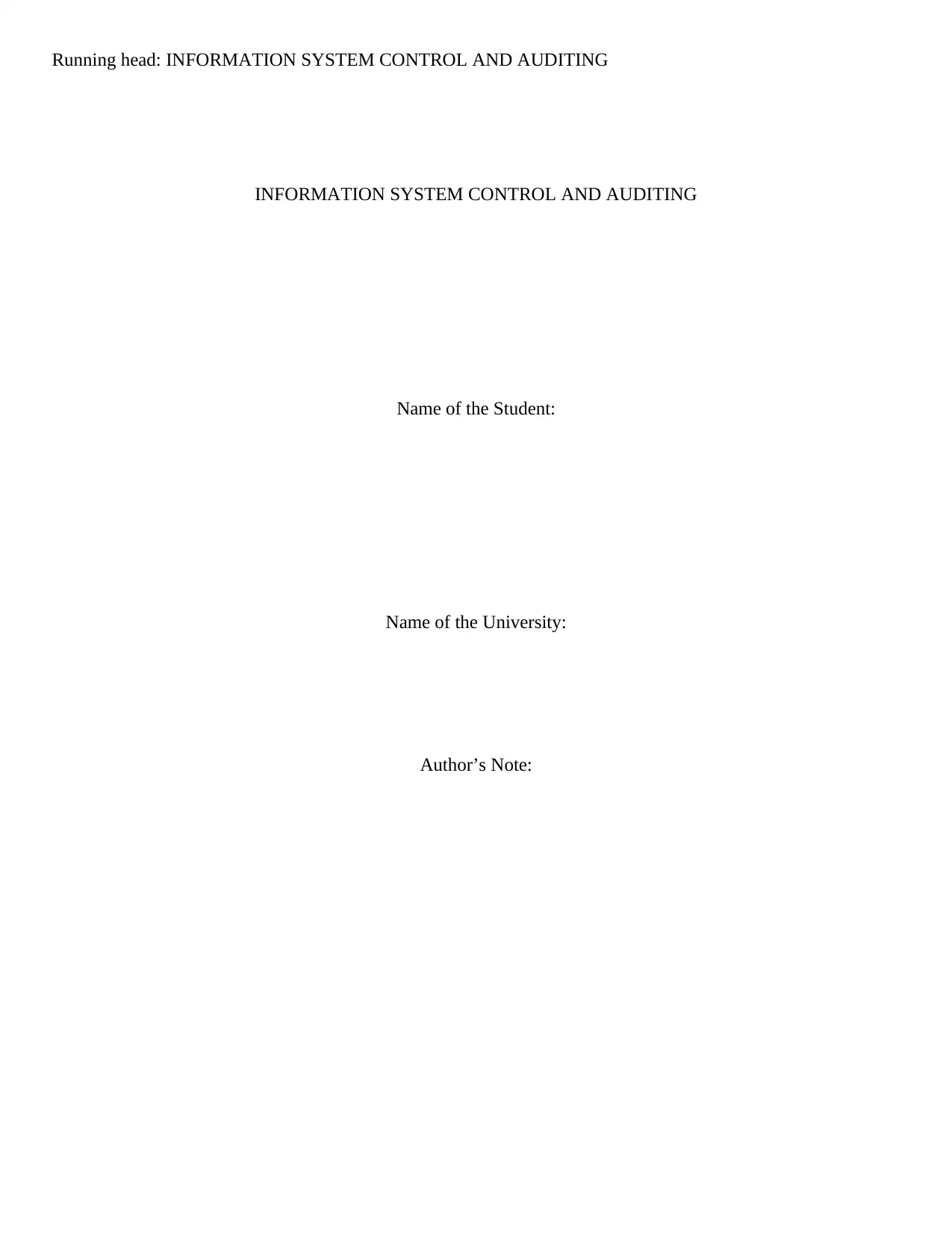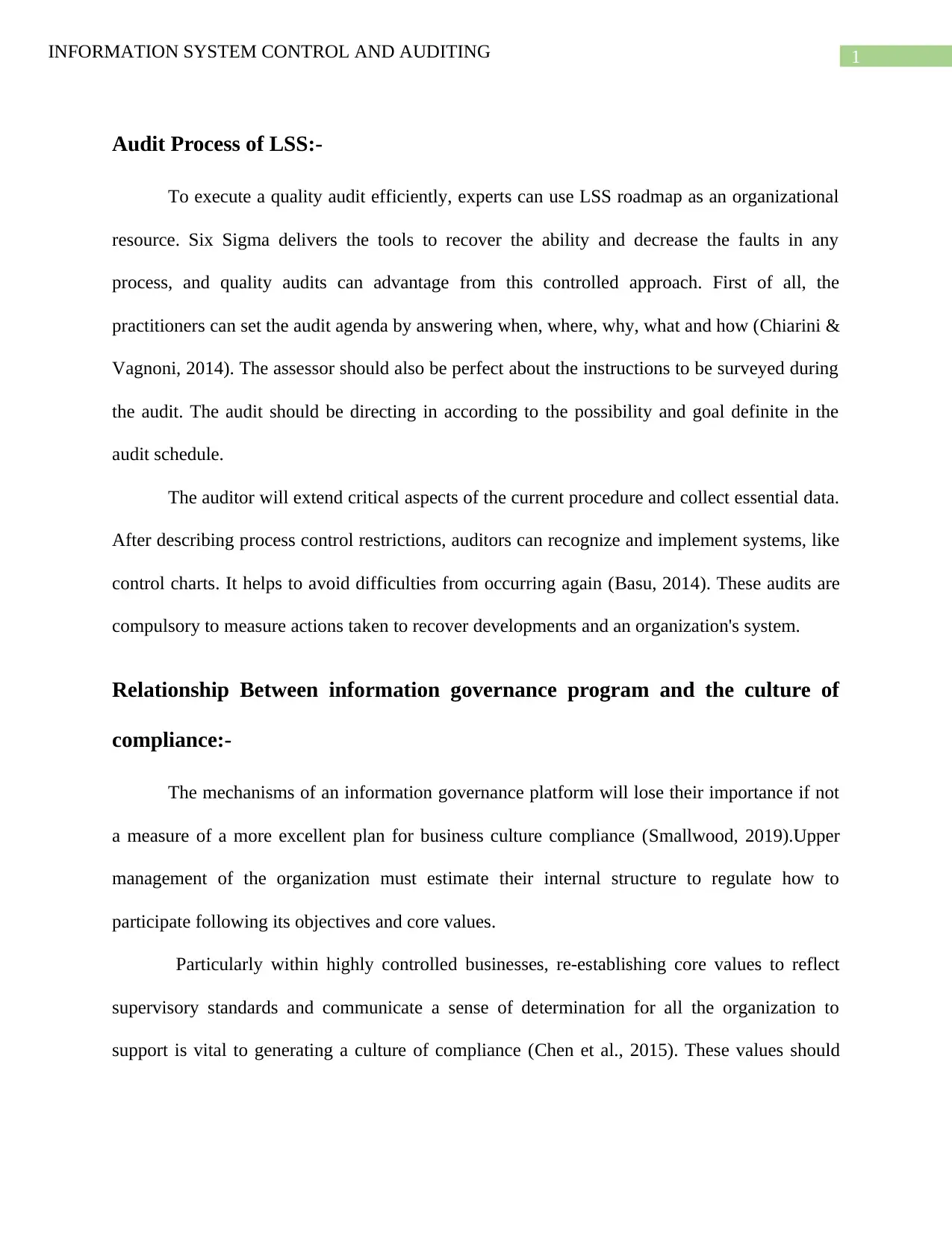Information System Control and Auditing Report - University Name
VerifiedAdded on 2022/09/12
|4
|693
|16
Report
AI Summary
This report provides an overview of information system control and auditing, focusing on the audit process and its importance. It discusses the use of the LSS roadmap for efficient audits, emphasizing the setting of audit agendas and the collection of essential data. The report also explores the relationship between information governance programs and the culture of compliance, highlighting the role of upper management and the establishment of core values. Furthermore, it addresses future changes in audit procedures, including the influence of technology for real-time value and the potential of cloud-based audit skills and cognitive computing systems to enhance audit quality. The report references several academic sources to support its findings.
1 out of 4









![[object Object]](/_next/static/media/star-bottom.7253800d.svg)